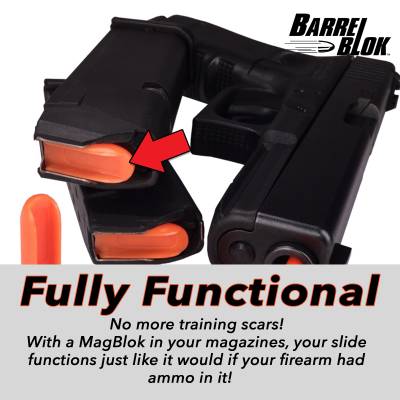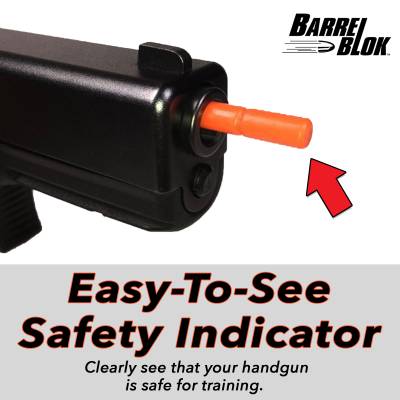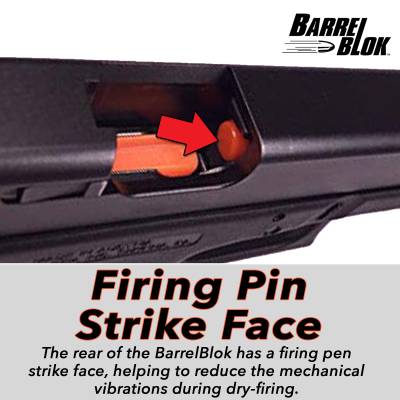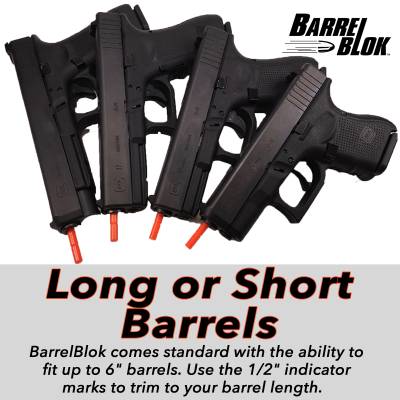"Dry Fire" Training
Considering the cost of ammunition… and range fees, it makes sense for a “new” (learning) shooter to spend time using “dry-fire” training exercises. This involves:
- practicing your stance
- how you grip the pistol (which varies by type of pistol you're practicing to use)
- finding targets through your sights with both eyes open (e.g., using a "Front Sight String" (aka “Brock String”) or "Advanced Focus String", as retired U.S. Navy SEAL Instructor Chris Sajnog recommends)
- trigger pull (e.g., including the Wilson Combat Training Tip - Penny Drill Dustin Aaron's "The Best Dry Fire Drills"… notice that he doesn't use the “finger forward” grip on his Glock)
- finding your trigger reset point (and avoid “trigger slapping”)
- quickly replacing empty magazines - using "indexing" (ignore Neil's inefficient slide racking technique… see the videos below for how to properly/efficiently rack a slide) or OPSGEAR® TACTICAL TIP: Properly Indexing a Pistol Magazine and A Different Way to Index Your Pistol Magazine
- clearing malfunctions
- performing a "press check" (to ensure that a round is in the chamber - even in low light conditions), etc.
Snap Rounds
“Snap (Dummy) rounds” are an inexpensive way to build muscle memory, practice your grip, and refine your trigger pull through dry fire training. Since “snap rounds” require you to eject each “dummy” round after pulling the trigger, they help you build strength and speed when racking the slide.
They're also a GREAT resource to have during “live-fire” practice by randomly intermixing them with live rounds in your magazine (to simulate a discharge failure - forcing you to clear it, and/or to more easily reveal unconscious “recoil anticipation” and flinching). While “snap (Dummy) rounds” can be problematic because they often unintentionally cause malfunctions (e.g., “double feeds”, “stovepipes”), many SMEs like them anyway because it forces trainees to learn how to recognize and clear the malfunctions. One of the best “snap (Dummy) rounds” is “A-Zoom”.
<note important>
As you spend time practicing, one topic that eventually surfaces is whether you should allow the slide to drop (using the slide release lever on the frame) on an empty chamber - and without a loaded magazine in the well.
The "Gun Guys" from Wilson Combat say DON'T DO THIS to Your Guns ("Gun Guys", Ep. 17). While they tend to focus on the Wilson “Match” (competition) pistols - they also point out that this can damage Glocks as well.
In contrast, the Brownell Smyth Busters: Dropping a 1911 Slide on an Empty Chamber say that it's fine - unless its a precision “Match” (competition) pistol.
In reality… it's probably a good idea to minimize (but not completely eliminate) the practice of dropping the slide on an empty chamber without a loaded magazine in the well (e.g., in this instance a magazine loaded with “snap” rounds should be fine). </note>
Barrel Blok
The “Barrel Blok” system is a GREAT step up from using “snap rounds” because, while you still have to rack the slide, there are no dummy rounds to eject (and get lost). “Barrel Blok” even has free online videos for "dry-fire" training (although some SMEs may take issue with the “form” used in the videos). At the risk of appearing like an ad for the “Barrel Blok” system, the below images show how the system works.
Dry Fire Mag
Stepping dry fire training up to another level is the Dry Fire Mag… which resets the trigger for you after every trigger pull. The Dry Fire Mag is much more expensive that the above options, but allow you practice more quickly AND rapid fire. While these are a bit expensive (at around $100 each), they WILL pay for themselves IF you use them for dry fire training.
IF you’re firing live ammo, divid the price of the Dry Fire Mag by the cost of one round of ammunition to see how many times you will have to pull the trigger using this system before it pays for itself (probably around 200 trigger pulls, which is well below the number of times you should be dry firing your pistol).
Unfortunately, they don’t make them for 1911s. 





